Step Inside Artist Firelei Báez’s Brooklyn Studio
The painter mines the past in her exuberantly layered works, in which colonial history collides with folklore and fantasy
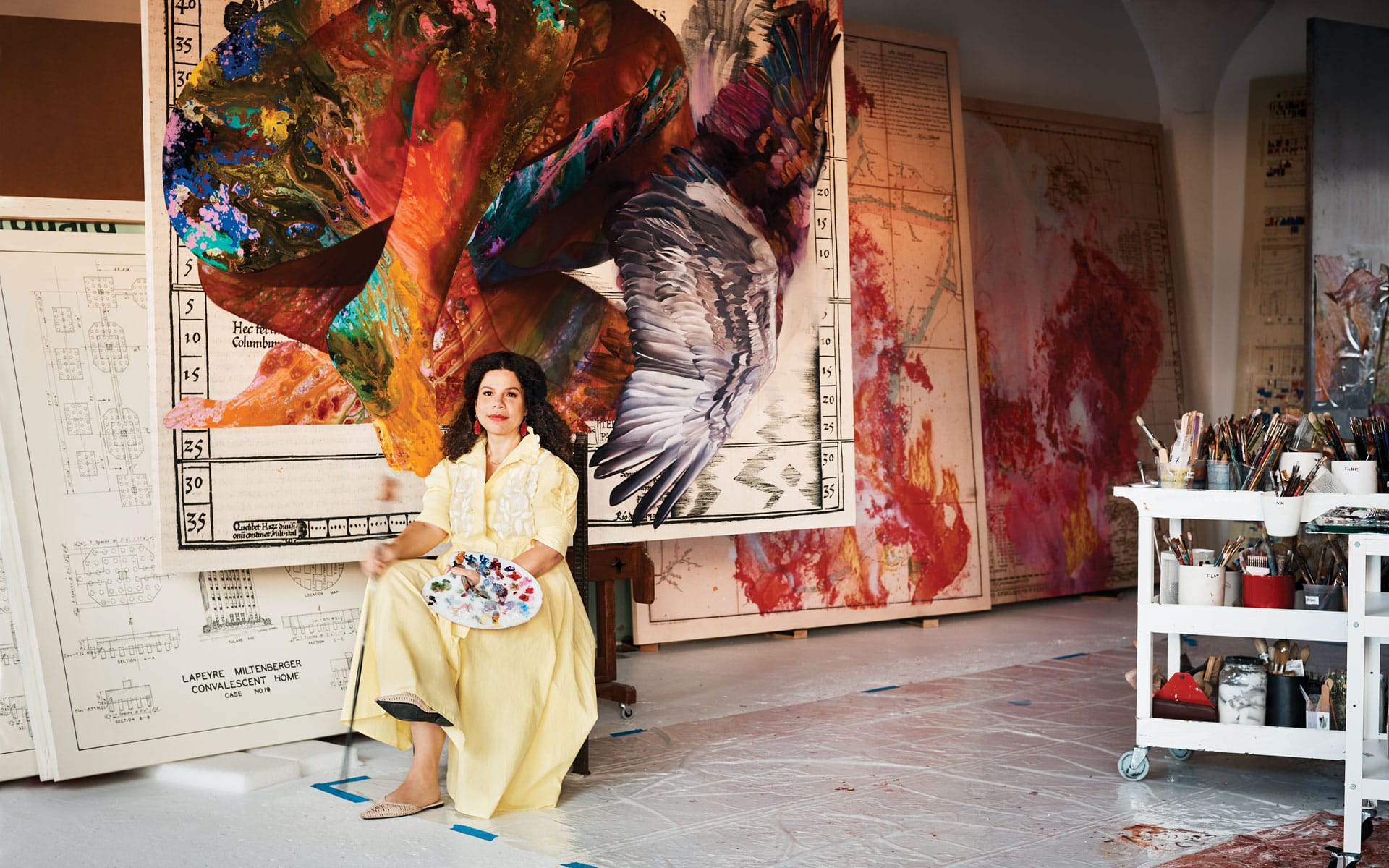
Historical maps and charts of the Caribbean provide fertile ground for Firelei Báez. Painting on large-scale reproductions of these colonial-era artifacts, the Dominican Republic–born artist blends elements of folklore, fantasy, and feminism while conjuring lost narratives and creating defiant characters, all in a riotous palette.
“The Caribbean was a crossroads,” says the artist, whose native country is part of Hispaniola, the island where Christopher Columbus made landfall in 1492. “It’s easy sometimes to forget how so many fortunes in the United States were predicated on the products and labor and physical selves of people from the Caribbean, especially Black and indigenous peoples. My work is really grounding how pivotal that has been for ideas of modernity.”
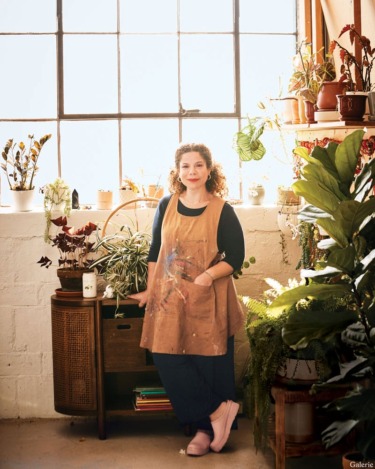
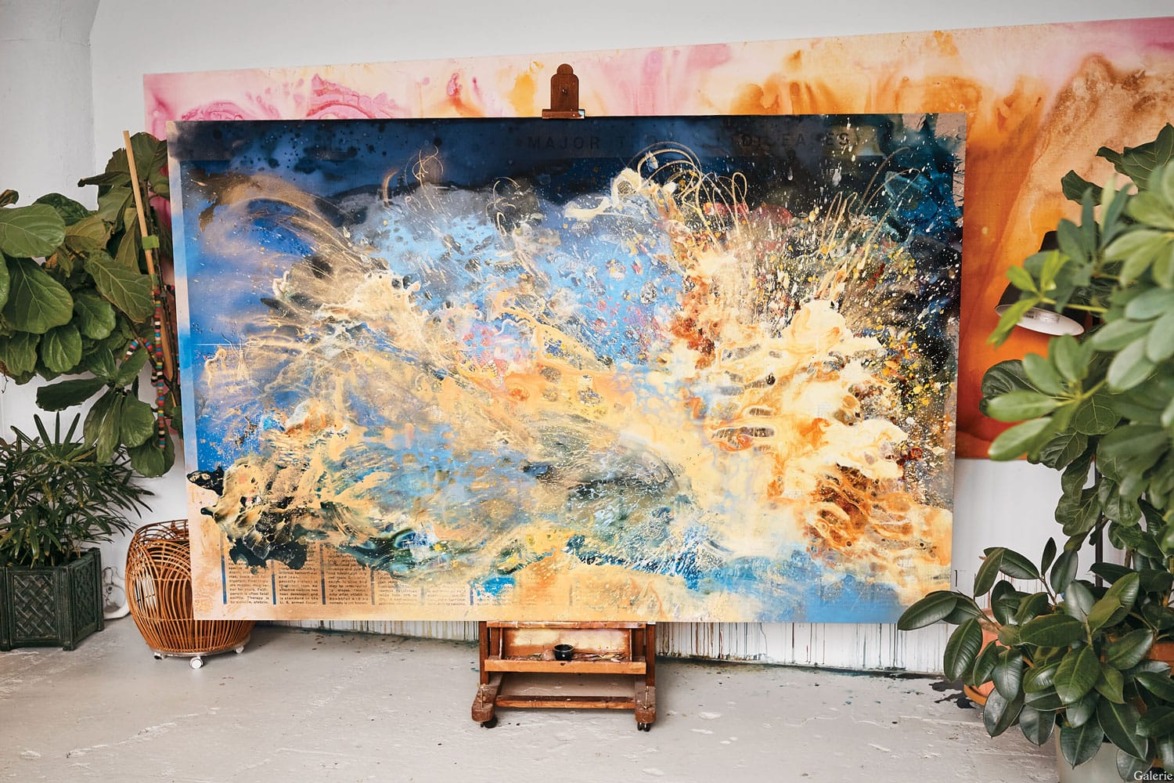
At her industrial space in the Red Hook section of Brooklyn, immersive paintings in progress—some more than eight by ten feet—warm up the cavernous studio, as does a profusion of tropical plants and flower arrangements. Not only is botanical imagery common in her art, but the lush environment, which she likes to enhance with incense and music, is also a crucial part of her getting into a creative zone. “It’s almost like entering a sacred space,” says Báez, who describes going into a “time fugue” when she becomes completely absorbed in painting.
Recently, she’s been completing new work for Hauser & Wirth, the international gallery she joined in September for the global reach and scholarship it offers, as well as for her first U.S. museum survey, which opens at the Institute of Contemporary Art in Boston on April 4. Báez’s first European museum show, which debuted at the Louisiana Museum of Modern Art in Denmark last fall, will travel to the Kunstmuseum Wolfsburg in Germany in July.
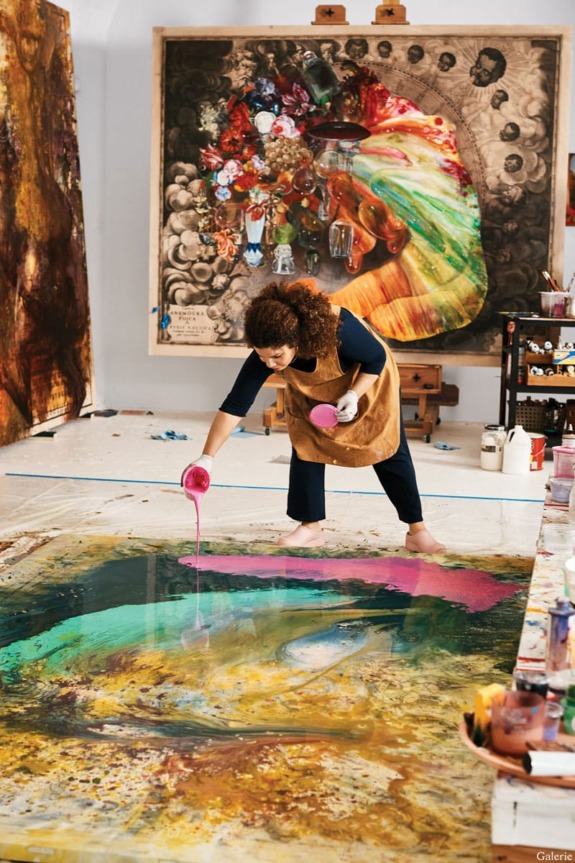
“Firelei is becoming one of the most important voices in painting today, drawing on so many different traditions, from European history painting to Persian miniatures to Chinese ink painting to trompe l’oeil,” says Eva Respini, who organized the ICA Boston exhibition and in the fall will bring an edition to the Vancouver Art Gallery, where she is now the deputy director and director of curatorial programs. “This is going to be a paintings show with a capital P—an enjoyment of color, form, beauty, figuration, abstraction.”
Báez, who left the Dominican Republic for Miami at age eight with her mother and two sisters, attended art school at Cooper Union in New York, where she focused on abstraction. “When I was going to Cooper, there was strong pushback against things that were specific to identity,” says Báez, who found the style of painting an effective way to enmesh the viewer in something visceral, even awe-inspiring.
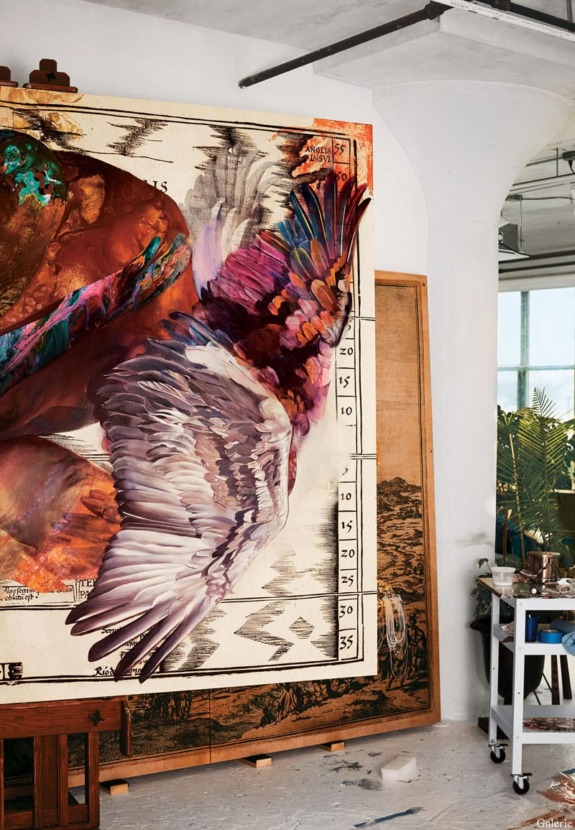
During a residency at Skowhegan in Maine, before getting her MFA at Hunter College in 2010, Báez started melding abstraction with figuration, incorporating the form of Ciguapa, the wild female trickster of Dominican folklore, into her paintings. “The story of the Ciguapa is always taught as a cautionary tale—a powerful woman is a threat to society,” she says. Her Ciguapas, identifiable by their lustrous mane of hair and backward-facing feet, wind a rhizomatic path through her works, stirring up tales of freedom and self-determination.
Báez’s canvases, printed with blown-up scans of archival cartographic sources, always start on the floor horizontally, over which she pours paint. She accesses hard-to-reach areas of her paintings using a jerry-rigged bridge on wheels, essentially a giant skateboard that she steers with a stick like a gondolier gliding above the canvases. From her abstract blobs of pooled paint, imagery will begin to reveal itself like in a Rorschach test. “I’ll start picking out the figuration,” says the artist, who then develops and defines what she sees, painting the final figurative elements more realistically in oil.
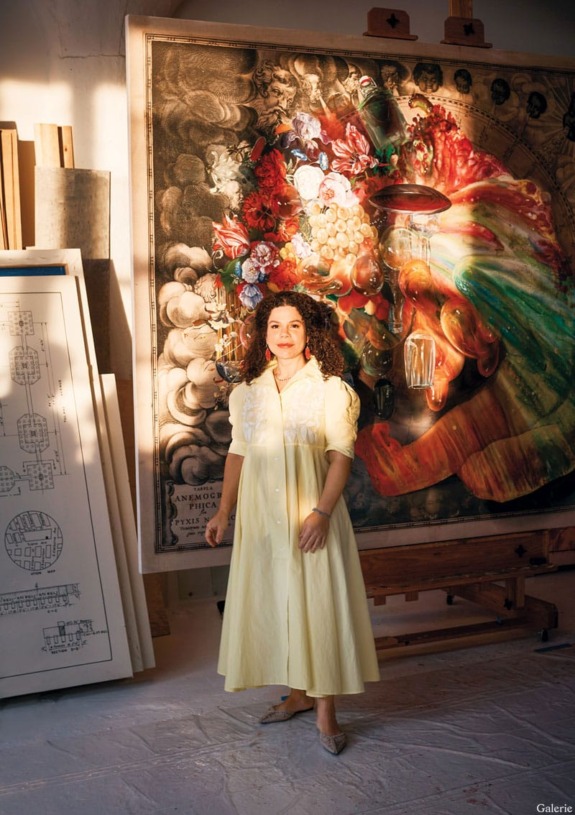
After pouring paint over a 16th-century map representing all the colonial kingdoms of the world as cards to be traded in a game, for instance, the artist was struck by the emergence of forms resembling horses stampeding and uncontrolled, which she refined to create the painting Untitled (Les Tables de Géographie Réduites en un Jeu de Cartes). A likeness of that work, completed in 2022, graces the cover of the catalogue for the ICA Boston show.
“The strongest ones are when I slowly pay attention to what the paint is giving and then articulate it as it should be,” says Báez, who likes how the chance atmospheric conditions of the day—the humidity, the temperature—affect the spread and tension of the paint. “I think nature is the best painter there is.”
A version of this article first appeared in print in our 2024 Spring Issue under the headline “Worlds Traveler.” Subscribe to the magazine.
